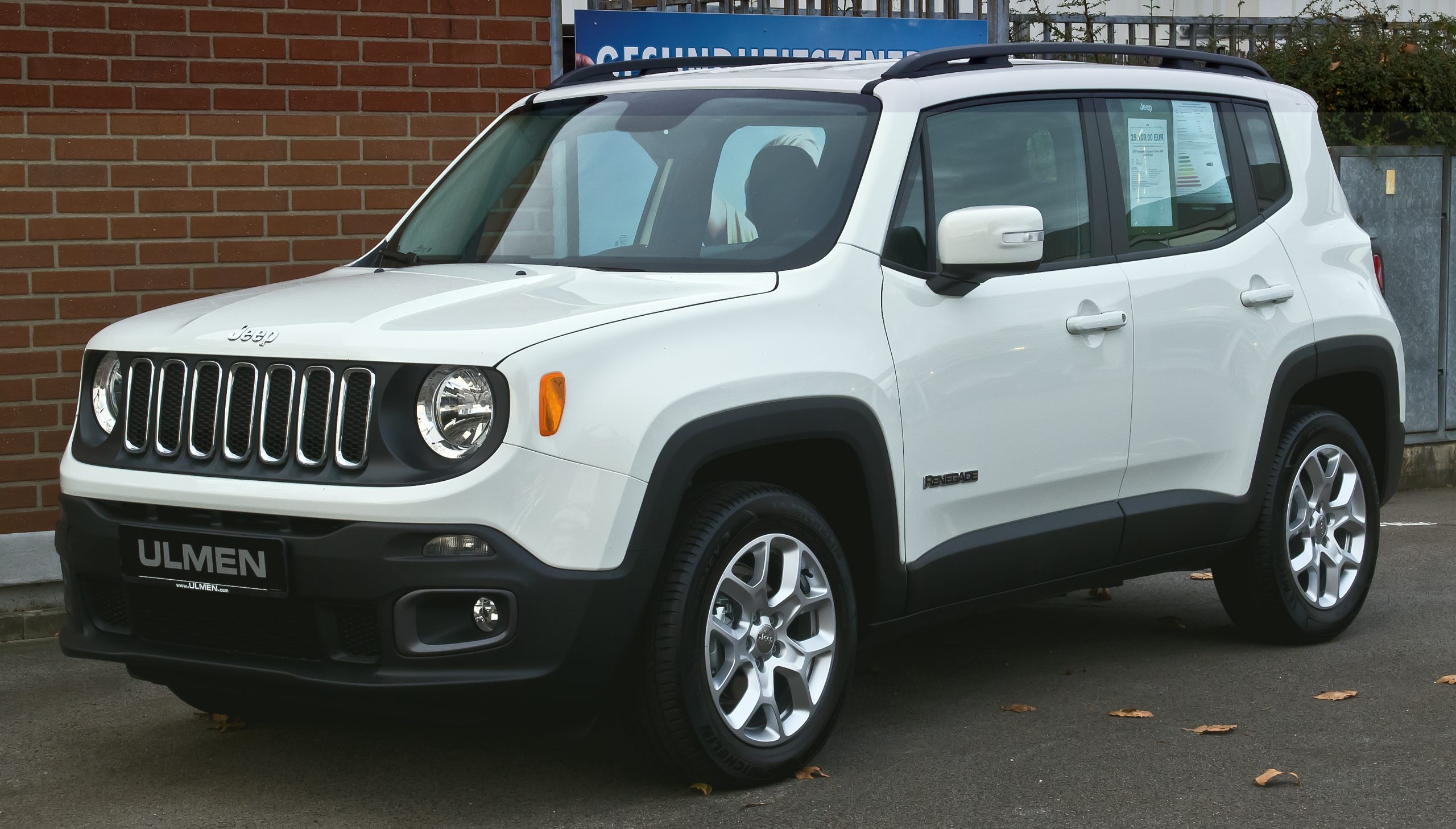In modern vehicles, safety features have advanced dramatically, with airbags playing a crucial role in protecting passengers during collisions.
Among these, side airbags are designed to protect occupants during side-impact crashes by inflating between the door and the person sitting in the seat.
However, in certain cars, the design of the front seats may unintentionally obstruct or interfere with the proper deployment of these side airbags, posing a safety risk.
While side airbags have become a standard feature in many modern vehicles, the positioning and design of front seats can sometimes hinder their effectiveness, particularly in crashes where the seat doesn’t allow the airbag to inflate fully or correctly.
This issue may arise due to factors like seat width, design, and placement of structural elements, such as the seatback frames or side bolsters.
In some vehicles, the seat design can obstruct the airbag’s deployment path, or the seat itself may be positioned in a way that limits the effectiveness of side airbags during a collision.
This can lead to potential injury in the event of an accident, especially when the airbag does not fully inflate to protect the occupant.
The automotive industry has long worked toward designing cars that balance safety with comfort, but seat configurations are often overlooked when it comes to side airbag functionality.
The following article will delve into 10 cars known for having front seats that may obstruct side airbags, explaining the design issues and how they affect the vehicle’s overall safety.
This examination is crucial for consumers who prioritize safety and are looking for vehicles with effective side airbag systems.
Let’s now take a closer look at some cars where front seat designs can compromise the safety of side airbags.
Also Read: 10 Cars With Second Row Side Storage for Snacks, Toys, or Tablets
1. 2015–2020 Jeep Renegade
The Jeep Renegade, a compact SUV introduced in 2015, was praised for its distinctive styling, off-road potential, and urban maneuverability.
However, despite its reputation as a rugged and youthful crossover, the Renegade has drawn scrutiny for a critical safety concern: the design of its front seatbacks and side bolster structures, which can obstruct proper deployment of the side airbags.
In the Renegade, the side airbags are designed to deploy from the outer edge of the front seatbacks to cushion occupants during side collisions. This type of deployment is common in many modern vehicles.
However, in the case of the Renegade, the contoured seatbacks, reinforced with thick foam and leather or cloth upholstery, limit the effectiveness of the airbag’s inflation path.
The curvature and density of the seat materials mean that when the airbag deploys, it may encounter resistance or partial obstruction before it can fully expand and form a protective barrier between the occupant and the door.
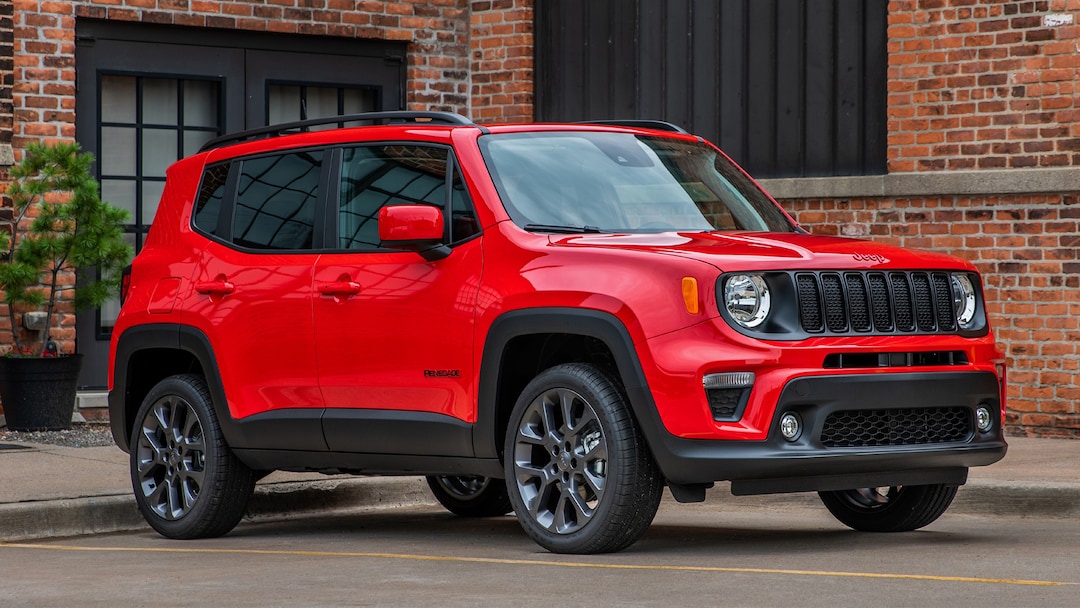
Reports and safety evaluations have noted that this obstruction can lead to incomplete inflation, reducing the airbag’s ability to absorb crash forces or prevent contact with the vehicle structure.
The presence of integrated armrests and side bolstering, while providing enhanced comfort, also contributes to the reduced effectiveness of the airbag in side-impact scenarios.
What exacerbates the issue is that this flaw isn’t immediately noticeable to the average consumer.
Unlike malfunctioning brakes or transmission issues, obstructed airbag deployment isn’t experienced unless the vehicle is involved in a side-impact collision—by which time, it’s too late to react.
Crash test results from certain agencies have even indicated that the Renegade’s torso protection score was not as high as expected, pointing indirectly to possible interference from the seat design.
It’s important to note that Jeep has not issued a formal recall related to this issue, likely because the airbags technically meet regulatory requirements.
Nonetheless, for safety-conscious drivers, the Renegade represents a vehicle where style and comfort inadvertently compromise critical passive safety features.
Those considering used Renegade models, particularly from the 2015–2020 production range, should be aware of this potential concern and balance it against the vehicle’s other strengths.
2. 2012–2017 Hyundai Azera
The Hyundai Azera, positioned as a near-luxury full-size sedan, aimed to bridge the gap between value and premium features during its production run between 2012 and 2017.
With a sleek design, ample cabin space, and advanced technology, the Azera gained attention among buyers looking for affordable sophistication.
However, beneath its polished surface lies a safety concern that has gone largely underreported: the front seat design’s interference with side airbag deployment.
In the Azera, the front seats are generously padded and heavily bolstered, with a focus on comfort and elegance.
The side airbags, mounted within the seatbacks, are intended to deploy between the occupant and the vehicle’s door in the event of a side collision. But due to the thick upholstery and integrated bolsters, the deployment path for these airbags can be compromised.
Crash data and some expert analyses have suggested that the overly stiff side bolsters may constrain the speed and direction of the side airbag’s inflation.
When the airbag tries to expand, it may encounter resistance from the internal structure of the seatback, slowing down deployment and possibly reducing coverage area.
This means that in a worst-case scenario—such as a high-speed side impact—the airbag may not fully shield the torso or pelvis of the front-seat occupant, increasing the risk of injury.
The issue is compounded by Hyundai’s decision to integrate additional luxury touches, such as cooled seats and additional reinforcement for lumbar support.
These features add bulk to the seatback and can further restrict the already limited expansion area for the airbag. While not defective by legal standards, this design decision undermines the real-world functionality of the side airbag system.
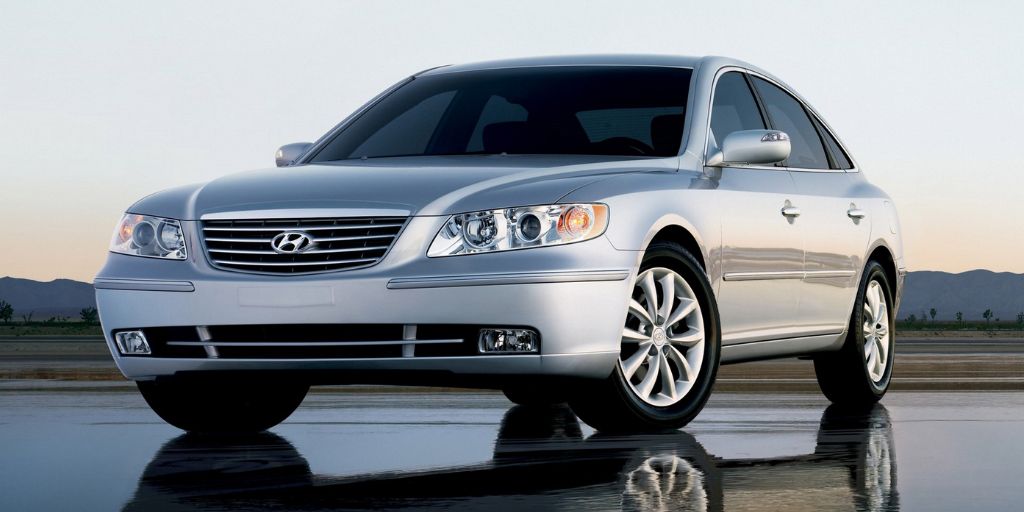
Another point of concern is that this model hasn’t undergone as many updated crash tests under newer, stricter side-impact criteria introduced in recent years.
Although the Azera performed adequately in frontal and moderate-overlap crash tests, the specific interaction between the seat structure and the side airbags remains questionable in certain side-impact scenarios—particularly for taller or larger occupants, who may not benefit from partial airbag inflation.
For a sedan that touts comfort, luxury, and safety in equal measure, the Hyundai Azera inadvertently compromises one of its most essential safety tools.
Drivers who prioritize full, unimpeded side airbag protection may want to explore other options or at least be fully informed of how seat construction can influence crash performance—even in otherwise well-regarded models.
3. 2014–2019 Nissan Rogue
The Nissan Rogue has been one of the brand’s top-selling vehicles in North America, especially during its 2014–2019 production cycle.
Known for its affordability, interior space, and fuel efficiency, the Rogue appeals to a broad audience ranging from small families to urban commuters.
Yet, despite its popularity, a closer inspection of its safety features—specifically the side airbag deployment in relation to the front seat design—raises a notable concern.
In these Rogue models, the side airbags are built into the seatbacks of the front driver and passenger seats.
While this is a common configuration among many vehicles, the Rogue’s bulky, high-density seat padding and integrated side bolsters can partially obstruct the airbag’s deployment trajectory.
The issue is most prominent in models equipped with premium cloth or leather-trimmed seats, where the upholstery is reinforced and tightly stitched, reducing airbag expansion space.

What results is a slowed or redirected inflation of the side airbags, which ideally should deploy outward and upward between the occupant and the side door in milliseconds. Suppose the seat’s internal foam or side structure resists this deployment.
In that case, the airbag may not fully extend to protect the torso or hip area, leaving these regions vulnerable during a side impact.
The danger is further magnified if the occupant is not sitting in an ideal posture or if the seat is reclined, both of which are common real-world scenarios.
Moreover, the Rogue’s front seats feature non-removable headrest and shoulder structures, which can also interfere with the upward inflation of the head-curtain portion of the side airbag.
While crash test ratings for the Rogue have generally been positive, the nuances of airbag deployment speed and coverage have not always been fully reflected in these evaluations, especially under the stricter criteria introduced in later years by IIHS and NHTSA.
An additional complication is that these seats were designed with cost-efficiency and modular assembly in mind, which prioritizes mass production over tailoring the perfect environment for airbag deployment.
Nissan’s platform-sharing strategy across multiple global models meant that comfort and uniformity sometimes outweighed specific safety optimizations.
As a result, even though the Rogue meets federal safety requirements, owners and safety experts have noted that the airbag protection it offers in certain side impacts is not as comprehensive as that found in competitors like the Honda CR-V or Subaru Forester—particularly when it comes to real-world deployment effectiveness.
The 2014–2019 Nissan Rogue stands as a reminder that strong safety scores in laboratory tests don’t always tell the full story.
For drivers concerned about optimal side-impact protection, especially those purchasing used models, it’s important to consider how front seat design can inadvertently compromise airbag performance, even in well-equipped and otherwise reliable vehicles.
4. 2010–2016 Chevrolet Equinox
The second-generation Chevrolet Equinox, produced from 2010 to 2016, was a major player in the midsize crossover segment. It offered spacious seating, a smooth ride, and a solid mix of fuel economy and utility.
However, a closer look at its safety systems—especially the integration of side airbags with front seat architecture—reveals a flaw that could compromise occupant protection in side-impact crashes.
In the Equinox, side-impact airbags are housed in the outboard portion of the front seatbacks, positioned to deploy between the occupant and the side door. While this design is standard in many vehicles, the execution in the Equinox raises concerns.
The bulkiness of the seatback’s foam padding, its high-profile bolsters, and reinforced stitching can restrict how the side airbag inflates during a crash.
Reports from insurance industry crash evaluations and vehicle safety forums suggest that in some real-world accidents, the side airbags in the Equinox do not always expand fully or with optimal positioning.
The contour and rigidity of the seat’s interior structure can limit how the airbag fans out, especially around the torso and pelvis regions.
The tightly packed foam and upholstery act almost like barriers that slow or skew the inflation, reducing the effectiveness of what is supposed to be a fast-acting, encompassing safety feature.
Additionally, certain Equinox trims—particularly those with power-adjustable or heated leather seats—are even more prone to this issue.
The electrical hardware and insulation used for comfort features adds bulk within the seatback, unintentionally crowding the airbag’s deployment chamber.
During a collision, this extra material may absorb or redirect the pressure of the expanding airbag, resulting in a diminished protective zone.
Moreover, the Equinox’s seat positioning plays a part. The vehicle sits higher than traditional sedans but lower than full SUVs, which can alter how energy is transferred in a side crash.

This in-between geometry can cause the seat-mounted airbag to miss its intended mark if the seat design doesn’t accommodate a wide enough deployment arc.
GM has not issued formal recalls or service bulletins specifically addressing side airbag interference in the Equinox, largely because the vehicles meet regulatory standards.
However, safety-conscious drivers and buyers in the used car market may want to factor in this limitation when evaluating side-impact protection.
Ultimately, the 2010–2016 Chevrolet Equinox reflects a challenge common to many mid-2010s vehicles: balancing comfort-focused interior design with the unimpeded performance of emerging safety technologies.
While the Equinox is a dependable and spacious family vehicle, its seat-related limitations on airbag functionality serve as a critical reminder that not all safety systems perform equally across different designs and configurations.
5. 2011–2016 Ford Explorer
The 2011–2016 generation of the Ford Explorer marked a major transformation for the nameplate, transitioning from a body-on-frame SUV to a unibody crossover platform.
This change was meant to deliver better ride quality, fuel efficiency, and everyday usability while still offering strong safety features.
However, despite its technological advancements, the Explorer’s front seat design introduced a safety drawback: partial obstruction of the side airbag deployment due to the structure and padding of the seats.
The side airbags in these Explorer models are integrated into the outer edges of the front seatbacks, intended to deploy laterally and protect the upper body during side collisions.
However, the Ford Explorer’s heavily reinforced seatbacks, particularly in upper trims with power-adjustable and ventilated leather seats, present challenges for airbag expansion.
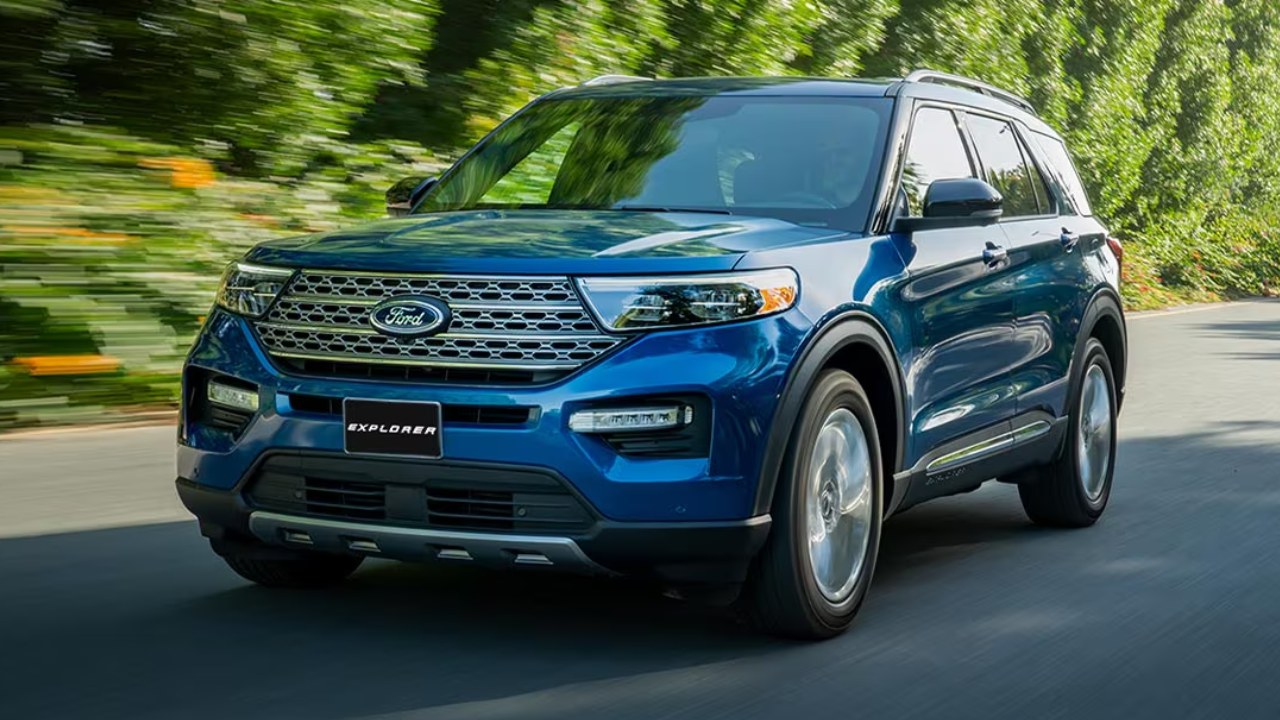
These seatbacks were designed with comfort, support, and styling in mind, often featuring thick bolsters and a stiff internal frame to support larger occupants. Unfortunately, these very design choices can limit how far and how fast the side airbags expand.
The high-density foam and upholstery create physical resistance, which may slow the airbag’s inflation or alter its deployment angle.
In real-world crash scenarios, this could mean the airbag doesn’t fully reach between the occupant and the door, especially for shorter passengers whose seating position doesn’t align ideally with the airbag path.
Additionally, because the Explorer often includes multiple interior configurations—such as bucket seats, captain’s chairs, and adjustable lumbar systems—the complexity of the seat internals can interfere with consistent airbag deployment across models.
Reports from crash test evaluations and anecdotal owner feedback have raised concerns about inconsistent side airbag coverage, particularly for vehicles with aged or worn seats, where internal padding shifts or compresses over time.
Another factor complicating airbag performance is the Explorer’s ride height and door sill geometry.
During side impacts, the relative angle between the occupant’s torso and the door may be more severe, requiring flawless airbag deployment to provide full protection. If the airbag is obstructed by the seat, even slightly, the occupant could make partial or full contact with the door panel.
Ford has not publicly acknowledged widespread issues related to side airbag obstruction in the Explorer, as regulatory tests were passed during its production run.
However, more stringent IIHS side-impact evaluations introduced after this generation have raised the bar, and newer Explorers have redesigned their seat-airbag interface—an implicit acknowledgment that previous models had room for improvement.
While the 2011–2016 Ford Explorer remains a capable and popular SUV, drivers and families relying on its safety credentials should be aware of the hidden limitations tied to front seat design and their impact on side airbag performance.
6. 2013–2018 Toyota RAV4
The Toyota RAV4 is one of the best-selling compact SUVs globally, praised for its reliability, fuel efficiency, and resale value. The 2013–2018 generation in particular was a strong seller, offering a balanced combination of practicality and advanced features.
However, during this period, a lesser-known issue emerged: the design of the front seats interfered with the optimal deployment of side airbags, potentially reducing their effectiveness during side-impact collisions.
In the RAV4, like many modern vehicles, the torso side airbags are mounted inside the outboard sides of the front seatbacks. The goal is to provide direct protection to the driver’s and front passenger’s ribcage and pelvis area in a crash.
However, the seats in this generation RAV4—especially in XLE and Limited trims—were designed with a focus on comfort and premium feel. This led to thicker bolsters, more rigid internal structures, and denser upholstery, all of which created a barrier to the expanding airbag.
In real-world crash dynamics, milliseconds matter. A side airbag must deploy rapidly and expand into the occupant space without obstruction. But when the seat material is too stiff or too layered, it can delay the inflation or restrict the ballooning of the airbag.

As a result, some occupants might experience incomplete coverage or force dispersion, making them more vulnerable to side-window intrusion or door panel impact.
Another challenge is the variability in seating position. The RAV4’s front seats offer considerable vertical and horizontal adjustability.
While this is excellent for driver comfort, it means that in a side-impact crash, the airbag may deploy misaligned relative to the occupant’s body, especially if the seat has been adjusted far back or reclined. In these configurations, the already-compromised inflation due to seat materials can worsen the protection scenario.
Crash test results for this RAV4 generation were mostly positive, but side-impact performance—particularly involving the torso region—was noted as “acceptable” rather than “good” in some evaluations, indicating there was room for improvement.
Toyota’s later redesign of the RAV4 in 2019 introduced significant seat structure updates and more favorable side airbag deployment results, subtly addressing prior weaknesses without issuing a formal recall or public announcement.
For families or individuals shopping for a used RAV4 from this generation, it’s worth considering how safety is impacted not just by the presence of airbags, but also by how well those airbags are able to perform.
The intersection of seat design and airbag engineering in the 2013–2018 RAV4 highlights that even dependable, well-loved vehicles can harbor overlooked design flaws that influence crash protection in critical moments.
7. 2011–2015 Volkswagen Passat
The 2011–2015 Volkswagen Passat was developed specifically for the North American market, offering generous interior space, a comfortable ride, and a restrained yet upscale design. Positioned as a midsize sedan with European driving dynamics, it gained favor with both private owners and fleet buyers.
However, this generation of the Passat introduced a design decision that inadvertently affected the performance of an essential safety system: the side airbags embedded in the front seatbacks.
In the Passat, side airbags are mounted within the outer bolsters of the front seats. These airbags are designed to deploy laterally and protect the occupant’s torso during a side-impact collision.
However, the 2011–2015 models used a rigid seat frame structure and a combination of dense padding and tightly wrapped upholstery, particularly in higher trims like the SEL Premium. This structure can interfere with the full deployment of the side airbags, particularly in the milliseconds following a crash.
What this means in practice is that the side airbag may deploy slower, or in a less-than-optimal trajectory, than what’s needed for full protection.
This concern is amplified if the occupant is sitting in a reclined position or is shorter than average—situations where the seat contours may further limit the airbag’s ability to fully inflate into the necessary space.
Unlike some competing sedans, the Passat during this generation did not incorporate external or supplemental side airbag outlets along the B-pillar to compensate for seatback obstructions. Therefore, the entire burden of side-impact protection rested on the effectiveness of the seat-mounted system.
In several internal safety evaluations, concerns were raised that airbag coverage in the lower torso region could be inconsistent, especially in high-speed lateral impacts.
Although the Passat scored reasonably well in IIHS and NHTSA crash testing overall, these tests don’t always simulate real-world seat usage variations—like how far back a seat is reclined, how the occupant is positioned, or how the upholstery behaves under crash forces.
This makes the reported obstruction by seat material a hidden risk, especially for aging vehicles where seat foam has compressed or shifted.
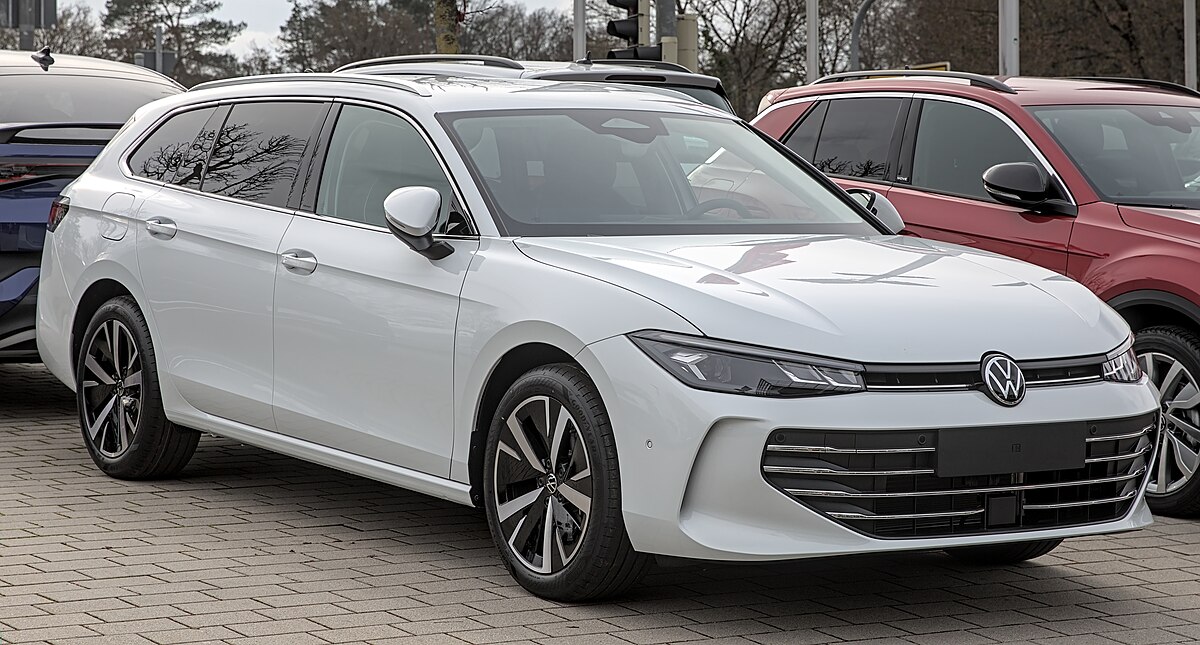
Volkswagen has improved the integration of seat-mounted airbags in more recent models, and newer generations of the Passat and Arteon have seat designs that better accommodate airbag inflation dynamics.
However, the 2011–2015 Passat remains a case study in how safety technology can be unintentionally compromised by interior design choices.
For used car buyers, especially those with families or regular passengers, understanding this kind of subtle safety trade-off is crucial.
A model that offers visual refinement and comfort may also conceal challenges in its critical safety systems—such as airbags—that are only tested in the most unfortunate moments.
8. 2008–2012 Honda Accord
The 2008–2012 Honda Accord, part of the model’s eighth generation, was a staple in the midsize sedan market. Lauded for its reliability, spacious cabin, and strong resale value, it was a go-to choice for families and commuters alike.
But despite its many merits, one issue has drawn increasing scrutiny in safety circles: the configuration of the front seats and how they can obstruct side airbag deployment.
In this generation of the Accord, Honda used seat-mounted torso airbags as part of the vehicle’s side-impact protection system. These airbags are embedded in the outer bolsters of the front seatbacks, designed to inflate between the occupant and the door.
However, the Accord’s front seats were built with broad seatback designs, relatively dense foam padding, and strong internal bolstering—particularly in the EX-L and V6 trims with power and heated seat features.
This seat design provides comfort and durability but creates an obstacle for airbag deployment. In crash events, the airbag must rapidly pierce through the seat’s foam and upholstery to inflate outward.
When the padding is too firm or the seat contour is too complex, the airbag may inflate more slowly, or in a constrained shape, limiting its ability to cushion the occupant from door intrusion.
Independent crash analyses and owner feedback have indicated that side airbag protection in this Accord can be inconsistent depending on seating posture.

For example, when the driver reclines the seat or adjusts it far back, the trajectory of the airbag can be further misaligned. Smaller passengers may find that the side airbag deploys above or below their torso’s critical impact zones, reducing effectiveness.
Additionally, the lack of B-pillar airbag overlap means that there is no redundancy in side protection. The entire torso area relies on a single deployment point in the seat. If that mechanism is hindered—even slightly—the difference in injury risk becomes substantial.
Though the Accord earned high crash safety ratings in standard tests at the time, these results often don’t account for variations in real-world conditions or small differences in occupant positioning and seat wear over time.
In 2013, with the next generation, Honda made revisions to both its seat structure and airbag system, including better-integrated side-curtain and torso airbags that improved consistency and deployment clearance. This suggests that Honda may have recognized the previous limitations and addressed them in its redesign.
The 2008–2012 Honda Accord remains a reliable and affordable vehicle on the used market. But for buyers who prioritize the most effective occupant protection—especially for frequent front-seat passengers—understanding the interplay between seat design and airbag deployment becomes an important part of the evaluation.
It’s another reminder that even the most respected vehicles can harbor subtle compromises when it comes to safety technology execution.
9. 2009–2014 Acura TL
The 2009–2014 Acura TL was the final generation of this midsize luxury sedan before it was replaced by the TLX. Designed to compete with European sedans like the BMW 3 Series and Audi A4, the TL offered strong performance, a spacious cabin, and high levels of standard equipment.
While the car was well-regarded for its durability and refinement, a critical oversight in seat design affected the deployment of front-seat side airbags, undermining its otherwise solid safety profile.
In this TL generation, Acura implemented seat-mounted side airbags to protect the torso and pelvic areas of front-seat occupants during a side collision. The system was engineered to deploy from the outer edge of the seatback and rapidly inflate between the occupant and the door.
However, the TL’s aggressively contoured seatbacks, built to deliver a sporty driving feel and strong lateral support, introduced structural and material obstacles that compromised airbag performance.
The bolsters on the TL’s front seats are firm and extend far along the occupant’s side. These were meant to hold the driver and passenger in place during spirited cornering but also created additional layers of dense foam and upholstery through which the airbag must expand.
In crash scenarios, this extra resistance can result in slower deployment or altered inflation patterns, particularly if the occupant is seated in a reclined or rearward position.
Another compounding factor is the TL’s use of advanced internal mechanisms for its seat adjustability features. Higher trims came with heated and ventilated seats, power lumbar support, and memory settings—all of which increased the seatback’s mechanical complexity.
These components, tightly packed within the seat, could limit the volume and direction of airbag expansion, especially during the fast-response window when milliseconds determine injury severity.
Despite passing standard NHTSA and IIHS crash testing protocols at the time, the TL’s side-impact scores—while acceptable—never topped the charts, particularly in the “torso injury” metrics.
These results suggested that although the airbags deployed, their effectiveness may have been diminished by obstructions inherent in the seat design.
In 2015, when Acura launched the TLX, the brand shifted toward slimmer, more airbag-friendly seat designs.

These newer seats allowed better routing for airbag modules and were made with more responsive, crash-optimized materials. The improvement indirectly highlights the shortcomings of the TL’s seat-airbag integration.
Owners and used-car shoppers considering a 2009–2014 Acura TL should be aware of this hidden limitation.
While the car is mechanically robust and offers a rewarding driving experience, the interaction between its performance-oriented seats and safety systems reflects the kind of design trade-off that’s important to recognize—especially for those prioritizing occupant protection in side impacts.
10. 2010–2014 Nissan Altima
The 2010–2014 Nissan Altima was a popular midsize sedan known for its comfortable ride, efficient powertrains, and sleek styling. It was a common choice for commuters and families seeking a reliable and affordable vehicle.
However, one aspect that has caused concern among safety experts is the design of the front seats and their impact on side airbag deployment.
In this generation Altima, side airbags protecting the torso are integrated into the outer edges of the front seatbacks, a design meant to provide targeted protection during side impacts.
While this is a widely used approach, Nissan’s seat design choices during this period inadvertently hampered the effectiveness of the airbags.
The seats feature pronounced lateral bolsters and thick, firm foam padding aimed at providing driver and passenger stability and comfort. These design elements, though beneficial for everyday driving, create a dense barrier that can obstruct the rapid expansion of the side airbags.

When a side collision occurs, airbags must inflate swiftly and fully to create a protective cushion. The Altima’s seat structure, however, can delay airbag inflation or restrict its full deployment, leaving occupants more exposed.
Furthermore, the Altima’s seats incorporate complex mechanical systems for power adjustments, heating, and lumbar support, which add to the internal bulk of the seatbacks. This further crowds the space where airbags need to expand, complicating the deployment dynamics.
Real-world crash data and consumer feedback have revealed instances where the side airbags did not provide full coverage in side-impact collisions, increasing the risk of injury to the torso and pelvis.
Although the Altima scored well in federal crash tests overall, these tests don’t always account for variations in seating positions or the influence of seat materials on airbag performance.
Nissan addressed some of these concerns in later models by redesigning seat construction to better accommodate airbag modules, improving deployment speed and coverage.
However, owners of the 2010–2014 Altima should be mindful that the interaction between seat design and side airbags may reduce the level of protection in certain crash scenarios.
Understanding this hidden limitation is important for anyone prioritizing occupant safety, especially in regions where side collisions are more common.
While the Altima remains a practical and well-rounded sedan, the nuances of its safety design highlight the importance of considering more than just crash test ratings when evaluating vehicle safety.
Also Read: 5 Cars With Rear Seats That Slide and 5 That Should

